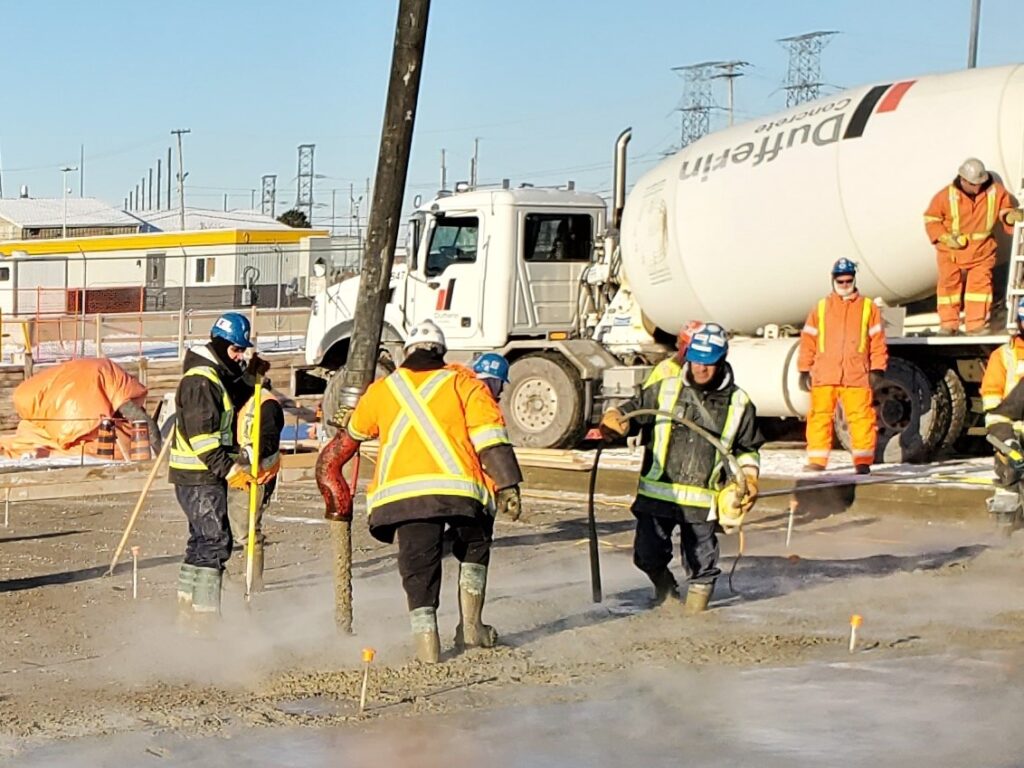Building and remodeling can and does occur all year. Sections of the country have very cold days during the winter. With adjustments, construction, including the use of concrete, can continue. Concrete professionals adjust their techniques and utilize tools that will compensate for the frigid conditions.
Continue reading about seven common mistakes for you and your concrete professional to avoid during the wintry weather.
1. Incorrect Temperature of Concrete
Mixed concrete needs to be pliable to be poured and manipulated into the correct formation. If the concrete becomes too cold, it begins to lose its strength as it cures. If this occurs, the concrete structure will be weaker than what it was designed for. Portable heaters can be used to maintain the concrete’s temperature. Consult with a professional before using heaters; incorrect application of heat to the concrete can cause formation issues.
2. Ground is Frozen
Pouring concrete onto frozen ground is another mistake to avoid. In the spring when the ground thaws, it can settle and shift. This can cause the concrete to form cracks as the ground moves. Additionally, there can be a variation in the curing process. The concrete first poured will cure at a slower rate because it is right on the frozen ground. The top of the concrete will cure more quickly; this can create structural issues.
3. Not Adjusting Tools for the Temperature
Hire a professional concrete company who will properly store their tools and equipment. Otherwise, if the temperature in the storage location of the contractor’s tools and equipment is not monitored, the formation of the concrete can be adversely affected. Cold tools can change the quality and strength of concrete.
4. Not Accounting for Earlier Sunsets
Not only does winter bring colder temperatures, but it also brings fewer hours of daylight. Concrete contractors need to account for the shorter outside workdays. Though still colder, the sunlight in the winter does help maintain the temperature of the concrete as it is being poured. If contractors encounter delays during the daylight, issues with concrete can arise.
5. Lack of Monitoring Equipment
Professional concrete contractors should have equipment that will provide accurate and timely information on the temperature. With this information, professionals can adapt the schedule. This will ensure that the concrete cures correctly with its strength intact.
6. Problems with Composition of the Concrete
Obtaining the correct mixture of concrete is essential any time of the year. Mixtures that are too wet will not dry to its expected strength. When the formation is too dry, the concrete does not meld together, which also negatively impacts its strength. Winter weather makes creating the correct composition of concrete more of an issue because of the colder temperatures.
7. Issues with the Forms
Forms are used in construction to create the shape needed for the final product. Due to the weight of concrete and the location of inground forms, there is a lot of pressure on the forms to hold their shape. Forms placed in frozen ground will have additional pressure on them to maintain their structure.

